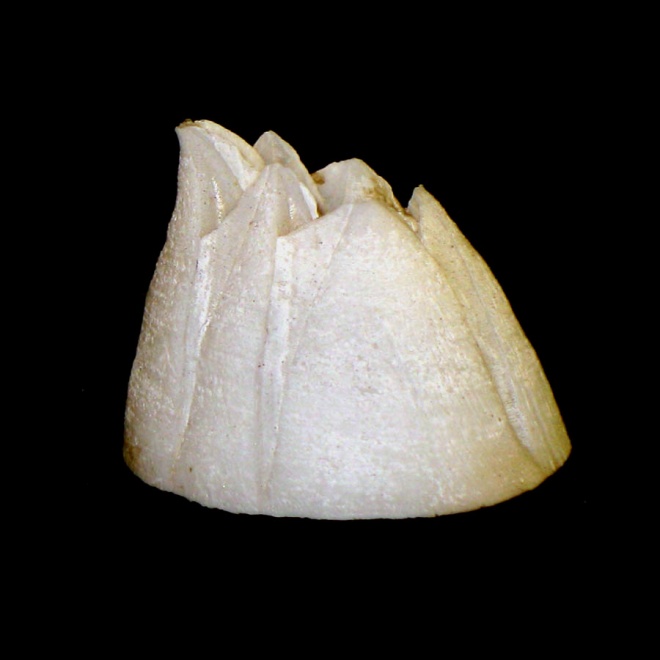SICB Annual Meeting 2012
January 3-7, 2012
Charleston, SC
Symposium: Barnacle Biology: Essential Aspects and Contemporary Approaches
Overview

The ivory barnacle, Balanus eburneus, is a common member of shoreline communities of the northwestern Atlantic.
Barnacles are found worldwide in marine systems and constitute a fundamental structuring element of many shoreline communities. In addition to studying their important ecological function, research with barnacles is progressing rapidly in areas such as environmental quality, settlement, symbiosis, range expansion, materials science, and evolutionary processes. The need for multi-disciplinary approaches is increasing and this symposium brings together a cross-section of research to highlight the wide array of recent advances in barnacle biology and provide direction for further inquiry. The core endeavor is to integrate reproductive, developmental, and ecological information about this taxon in an evolutionary framework. Topics addressed will include systematics, biogeography, biofouling and adhesion, sexual theory, morphological plasticity, and biology of larvae.
Sponsors:
-
SICB Division of Invertebrate Zoology & Division of Ecology and Evolution,
-
The American Microscopical Society,
-
The Crustacean Society,
-

Organizer
- John D. Zardus, The Citadel, Department of Biology, Charleston, SC
Speakers
S10-1.1 Saturday, Jan. 7, 08:00 JARRETT, JN:
Costs and benefits of alternative defensive morphologies and population variation in phenotypic plasticity of the barnacle Chthamalus fissus
S10-1.2 Saturday, Jan. 7, 08:30 RAND, DM; FLIGHT, PA*:
Population genomics of the acorn barnacle: tests of balancing selection at Mpi and diversifying selection across the genome
S10-1.3 Saturday, Jan. 7, 09:00 WARES, J.P.*; EWERS, C.:
Genetic variation: are barnacles so strange?
S10-1.4 Saturday, Jan. 7, 10:00 HOEG, JT*; CHAN, BKK; GLENNER, H; MARUZZO, D; OKANO, K:
Metamorphosis in balanomorphan, pedunculated and parasitic barnacles: A video based analysis
S10-1.5 Saturday, Jan. 7, 10:30 HOLM, E.R.:
Barnacles and biofouling – a brief history and summary of current research approaches and results
S10-1.6 Saturday, Jan. 7, 11:00 RITTSCHOF, D.*; DICKINSON, G.H.; WAHL, K.J.; BARLOW, D.; ORIHUELA, B.; VEGA, I.E.; EVERETT, R.:
Barnacle Glue, is curing like blood clotting?
S10-2.1 Saturday, Jan. 7, 13:00 PEREZ-LOSADA, M*; HOEG, JT; ACHITUV, Y; CRANDALL, KA:
Deep phylogeny and character evolution in the Thecostraca barnacles
S10-2.2 Saturday, Jan. 7, 13:30 JONES, D.S.:
The biogeography of Australian barnacles
S10-2.3 Saturday, Jan. 7, 14:00 CHAN, B.K.K.*; TSANG, L.M.; NG, W.C.; WILLIAMS, G.A.; CHU, K.H.:
Biogeography of the widespread intertidal barnacle Chthamalus malayensis in Indo-Pacific waters: the interplay of geological history, contemporary ocean circulation patterns and habitat specificity
S10-2.4 Saturday, Jan. 7, 14:30 YAMAGUCHI, S.*; SAWADA, K.; YUSA, Y.:
Life history and sexuality patterns in barnacles: A theoretical perspective

